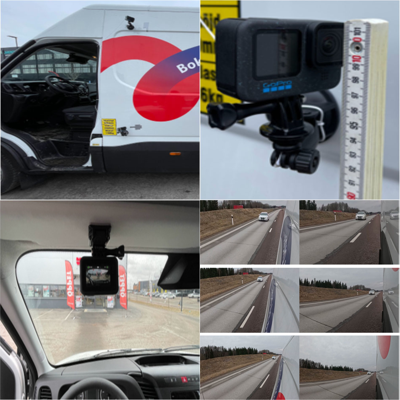
This study investigates how different camera perspectives presented in digital rear-view mirrors in vehicles, also known as Camera Monitor Systems, impact drivers’ distance judgment and decision-making in dynamic driving scenarios. The study examines (1) the effects of field of view and (2) camera height on drivers' ability to judge distances to rearward vehicles and to select safe gaps in potentially hazardous situations. A controlled lab-based video experiment was conducted, involving 27 participants who performed distance estimations and last safe gap selections using a simulated side-view mirror display. Participants viewed prerecorded driving scenarios with varying combinations of field of view (40°, 76°, 112°) and camera heights (1 meter, 2.3 meter). No significant effects were found for camera height, but wider field of views led to more accurate distance estimations. However, the use of a wider field of view also increased the risk of potentially dangerous overestimations of distance, as evidenced by the last safe gap results. This suggests that a wider field of view leads to the selection of smaller and potentially risky gaps. Conversely, narrow field of views resulted in underestimations of distance, potentially leading to overly cautious and less efficient driving decisions. These findings inform Camera Monitor Systems design guidelines on how to improve driver perception and road safety, to reduce accidents from vehicle distance misjudgments.

Sublimity has long been a theme in aesthetics, as one of the human emotions experienced when perceiving vastness, terror, or ambiguity. This study investigated the visual conditions that evoke sublimity using virtual reality (VR). Participants observed sublime content, developed based on previous research, under two factors conditions of (1) wide or narrow fields of view (FOV), and (2) 2D or 3D video presentations. We collected psycho-physiological evaluations from the participants. The results demonstrated that a wider FOV enhanced the perception of sublimity and pleasantness. In particular, gaze fixation time tended to increase under conditions of wider FOV and 3D presentation, supporting the effect of sublimity in VR. This suggests the potential of VR as a valuable tool for amplifying the experience of sublimity.